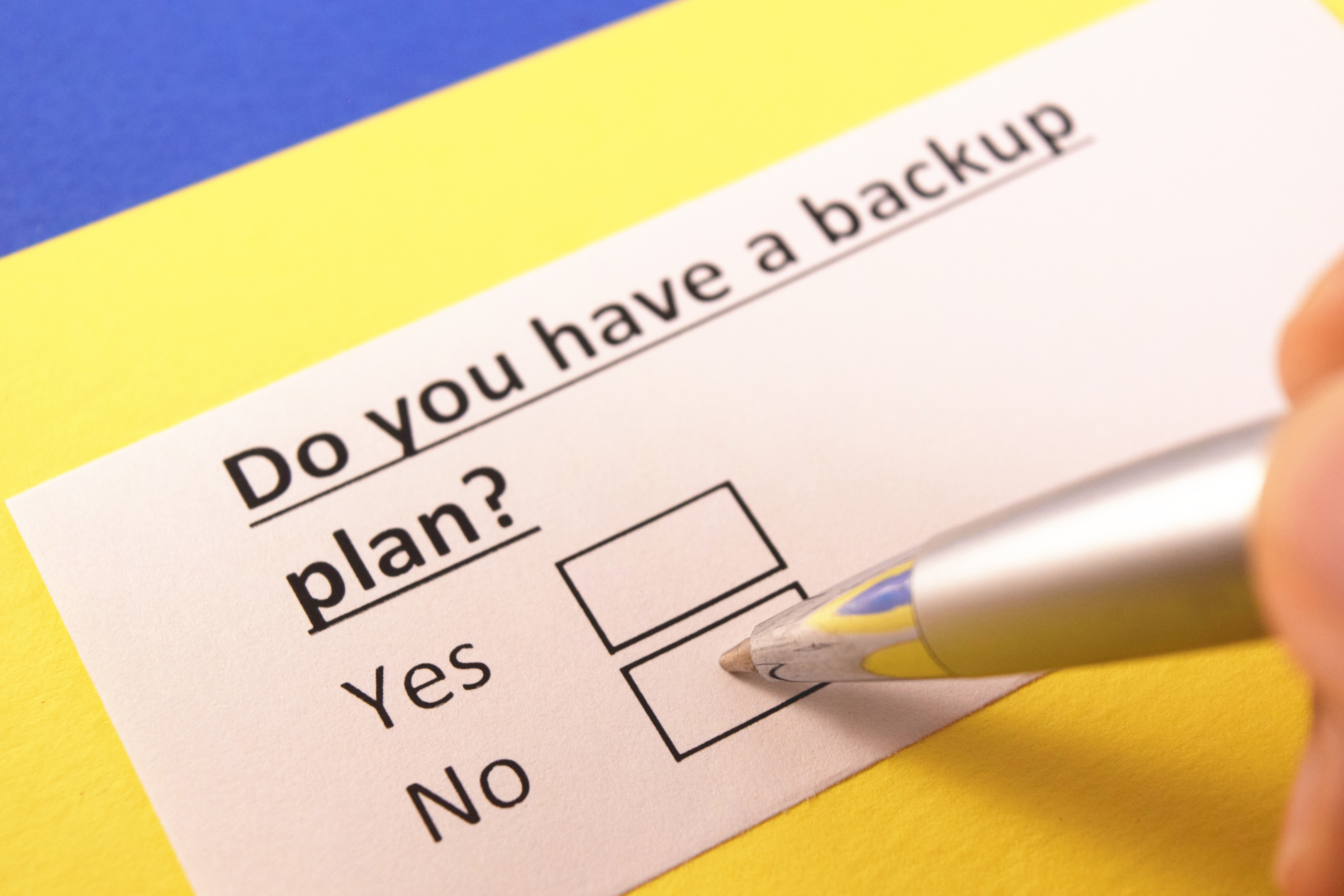Crafting Effective Disaster Plans for Businesses: A Step-by-Step Guide
Disasters can strike anytime, and unprepared businesses are hit hardest. This guide strips away the complexity and equips you with practical steps for developing robust disaster plans for businesses. You’ll find analysis techniques for identifying risks, strategies for continuity, and approaches for team assembly. Start fortifying your operations now, without sifting through pages of unnecessary detail.
Key Takeaways
- Business continuity planning is crucial for any business size to assess potential risks, design a clear disaster response strategy, and assemble a dedicated business continuity team.
- A robust business continuity plan should include well-crafted communication strategies, comprehensive data protection measures, and strict employee safety protocols to ensure smooth business operations during and after a disaster.
- Regular testing and updating of disaster plans, leveraging technology for risk assessment and emergency management, and utilizing resources like insurance and financial assistance are essential for enhanced disaster preparedness and resilience.
Crafting Your Business’s Disaster Blueprint

Commencing the process to safeguard your business from unforeseeable events hinges on crafting a thorough blueprint—a robust business continuity plan. This master strategy acts as a fortress guarding against the turmoil spawned by many disasters. For businesses, big or small, implementing business continuity planning is crucial. It infuses resilience into every aspect of small business operations and offers larger enterprises an updated catalog of resources essential for disaster defense.
Preparation is key—anticipating various disasters and ensuring that both recovery and ongoing operations can be maintained with minimal disruption no matter what challenges emerge.
Assessing Potential Risks
An efficient disaster plan is built upon a comprehensive evaluation of possible risks, involving not merely an identification of potential issues, but also the assessment of how significant their effects might be on your business operations. This process blends emergency preparedness with strategic anticipation. Rather than simply cataloging various hazards, it entails an in-depth analysis regarding their impact on your company and identifying the necessary safety systems to mitigate them. We advise every business to complete an annual risk assessment. Click here to view our resources on risk assessments.
This approach extends beyond internal measures. It encompasses coordination with external resources as well. Specifically, planning includes determining how you will collaborate with local emergency services during a disaster scenario.
Designing the Disaster Plan
Creating a disaster plan for your business is similar to devising a military tactic. It involves establishing precise protocols for responding to crises, aiming to optimize the use of resources and reduce harm and losses when disaster hits. Working with your MSP you can devise a disaster plan that takes into account where your software, network, and solution risks may lie. Determining which workflows are cloud based and what workflows are done locally is a first step in the technology aspect of a risk assessment.
It’s important not to view your disaster plan as merely paperwork. Rather, it should be considered a flexible framework designed to adapt alongside your business and emerging threats from potential disasters.
Assembling Your Business Continuity Team
The core of any disaster plan lies within the business continuity team, whose primary responsibility is to navigate your business through turbulent times brought on by a crisis. Comprised of members holding various positions – from those in charge of communications to IT experts and safety managers – every individual contributes significantly to the rehabilitation process of the enterprise. A leader plays a crucial role, providing oversight throughout this endeavor, while clear delineation of responsibilities is indispensable for making sure no vital aspect goes unaddressed.
It’s imperative that this team encapsulates diversity in capabilities and representation from different sectors within the company. Doing so guarantees comprehensive protection over all essential operations. Team selection should be grounded upon specialized knowledge and proficiency in decision-making processes. It is critical that you involve team members from every aspect of company operations. Identifying critical systems in every workflow is of tremendous importance when developing a disaster plan.
Essential Elements of a Business Continuity Plan

A solid business continuity plan is founded on three essential components: strategies for communication, measures to protect data, and protocols to ensure employee safety. These elements are key in the harmonized response to disasters that guarantees the business can recover and maintain continuity.
It’s crucial that this plan isn’t just theoretical but actionable and frequently revised, containing methods that enable quick resumption of business operations after a setback occurs. The efficacy of having such a preparedness blueprint lies not merely in its existence. Successful organizations demonstrate this by incorporating expert advice into their strategy development process, promoting a mindset geared towards preparedness and robust resilience. Working with your partners in IT, Insurance, and building management is crucial to laying out a plan that is actionable.
Communication Strategies
During a crisis, transparent and effective communication acts as the cohesive element that binds your response tactics. Having a business plan with comprehensive communication methods guarantees that all relevant parties, including employees and customers, are kept in sync and well-informed. It needs to incorporate systems for distributing alerts within the organization, conveying information to stakeholders, and managing interactions with the media. Gathering information such as employee personal cell phone information and keeping that information up-to-date for emergencies is important.
It is essential to leverage technologies such as satellite communications and social platforms to ensure instantaneous transmission of updates. This approach positions your enterprise as an emblem of dependability when faced with unpredictable situations.
Data Protection and IT Recovery

In today’s digital era, data serves as the lifeblood of business operations. It is critical to safeguard this valuable resource. By implementing robust data protection and IT recovery plans, you fortify your enterprise against the potentially devastating effects of natural disasters or cyber-attacks, ensuring that your business maintains its operational rhythm.
It’s important to note that email remains a significant entry point for most cyber threats facing businesses—akin to a fortress’ gates needing vigilant defense. Ensuring strong cyber security measures in this area is crucial for disaster prevention and maintaining seamless continuity in your business activities.
Employee Safety and Support
When an emergency arises, the safety of your team is of utmost importance. Ensuring that all employees, including those with disabilities, are accommodated in your emergency preparedness plans demonstrates both compliance and compassion. It’s critical to have explicit procedures in place for keeping employees safe from various threats such as fires and hazardous materials so that every individual is taken into account and aided during a crisis situation.
Insurance and Financial Preparedness

Having insurance and being financially prepared serve as your monetary shield against the economic consequences that disasters bring. These measures are critical for keeping your business running and aiding in a seamless recovery process. Far from being just a fallback, insurance is an instrumental resource that can accelerate the return to normalcy by guarding against revenue losses when business operations are halted.
It’s an undeniable fact that businesses without adequate insurance coverage face a greater risk of collapsing following a disaster. This highlights how crucial it is to have financial defenses firmly in place.
Understanding Business Interruption Insurance
Business interruption insurance serves as a crucial buffer against the tumultuous effects of catastrophe, reimbursing businesses for revenue losses during times when they must abandon their properties because of damage caused by disasters. This coverage is essential to manage financial repercussions from significant catastrophes and offers assurance that your enterprise can endure prolonged disturbances.
Recognizing every detail of your policy is vital, which means being aware of provisions covering closures mandated by authorities and additional expenditures aimed at averting complete operational stoppages while repair efforts are underway.
Working with Your Insurance Agent
The complexities and importance of insurance are undeniable. In this complex realm, the role of your insurance agent is to be a beacon, aiding you in multiple ways including:
- Securing appropriate coverage safeguarding your primary facility
- Guaranteeing that your policy corresponds with present-day replacement costs
- Counseling you on incorporating ordinance or law coverage for covering the cost of bringing your property up to date with existing building codes following a disaster.
Securing Financial Assistance
In the wake of a disaster, financial assistance can serve as a crucial support for businesses striving to recover. Entities such as the Small Business Administration (SBA) provide aid aimed at assisting small businesses in reconstruction efforts, which includes addressing uninsured losses and covering continuous operating expenses.
This type of support from organizations like the federal emergency management agency is instrumental not just for immediate recovery initiatives but also facilitates investment in enhancements that protect against potential future emergencies. Such strategic funding strengthens your business’s resilience over time.
Implementing Safety Systems and Emergency Protocols

When disaster hits, your primary safeguards are the safety systems and emergency procedures in place. These components of your contingency strategy must operate without error during critical situations. The execution of these systems involves guaranteeing that channels for emergency communication are readily available and establishing backup avenues should any system fail.
Developing Evacuation Routes
Your safety protocol hinges on the essential elements of evacuation routes and wardens, which facilitate a structured and swift departure in case of an emergency.
Ensuring employees’ safe egress is made possible by conspicuously marked evacuation paths complemented by comprehensive diagrams. These aid not only staff but also emergency responders in moving through your premises effectively.
Handling Hazardous Materials
Managing hazardous materials and mitigating human-caused hazards requires careful preparation and education. It is imperative that employees tasked with managing these substances or utilizing fire extinguishers undergo training compliant with OSHA standards to guarantee their safety during an emergency.
Effective handling of these substances goes beyond mere adherence to regulations. It’s about safeguarding your workforce and preserving the environmental integrity.
Preparing for Widespread Serious Illness
In the current climate, it is imperative for businesses to be equipped to handle health emergencies such as a widespread serious illness. Contagious disease protocols that many of us have experienced recently should be documented if they are to be used in the future.
Testing and Updating Your Disaster Plan
The effectiveness of a disaster plan is ultimately determined by its implementation. It is crucial for a business to engage in continual testing and revision of the plan to maintain its usefulness and efficiency. Through this process of ongoing improvement, insights gained from simulations and actual emergencies are incorporated, thereby fine-tuning the strategy to more effectively address your company’s specific requirements when faced with a disaster.
Conducting Drills and Training
Exercises such as drills and training sessions serve to activate your disaster plan, functioning much like practice runs that prepare your team for actual emergencies. These activities are crucial in evaluating the effectiveness of emergency response protocols, business continuity strategies, and crisis communication plans by measuring how prepared your personnel is to respond swiftly and effectively during an unforeseen event. This also includes testing data restore functions and testing standby technical solutions.
It’s important that this training encompasses actions necessary for preserving life safety and includes every member of the team—from those newly employed to veteran leaders—so everyone knows their specific responsibilities when it comes time to execute emergency procedures. This should involve both individuals designated as emergency personnel and broader categories of emergency responders who play a vital role in these scenarios.
Reviewing and Revising the Plan
It’s crucial to understand that a disaster plan is dynamic, meant to adapt alongside your business and the shifting spectrum of potential risks. To maintain its relevance and efficiency, it should undergo yearly evaluations with updates reflecting feedback from drills and actual performance.
Leveraging Technology for Enhanced Preparedness
In today’s business landscape, technology plays a critical role in boosting readiness for disasters. It provides sophisticated instruments for evaluating risks, monitoring situations as they unfold, and swiftly spreading crucial information. It simultaneously tackles hazards associated with the use of technology itself.
Technological advancements like Geographic Information Systems (GIS) and sensor networks markedly increase your capacity to foresee disasters and react effectively to them.
Using AI and Analytics for Risk Assessment
The advent of AI and analytics has transformed the way businesses assess risk by:
- Enhancing their ability to forecast potential disasters with improved precision
- Utilizing historical data combined with predictive analytics to foresee possible calamities
- Allocating resources more effectively in an effort to mitigate the effects on business operations.
Digital Tools for Emergency Management
AI-assisted communication tools are critical in the realm of emergency management. For example, ChatGPT has the ability to conduct conversations in natural language, offering businesses automated communications for emergency responses.
Steve.AI offers a platform where users can rapidly produce educational videos which enhance training and response during disasters.
Additional Resources for Business Preparedness
When crafting your company’s preparedness plan for disasters, be aware that a multitude of resources are at your disposal. These include an array of online instruments, comprehensive checklists, and expert advisory services designed to support you in the process.
Leveraging these additional resources will aid in thoroughly addressing all aspects of disaster planning including devising communication tactics and strengthening financial robustness.
Online Tools and Checklists
Resources like the step-by-step guide available on Ready.gov and FEMA are instrumental in formulating disaster plans tailored to specific hazards. Such online tools and checklists assist businesses by providing a detailed approach for maintaining consistent operations, including IT support considerations, ensuring that your business’s plan is thorough.
Professional Consultation Services
Consultation services of a professional nature offer the essential proficiency for enhancing IT expenditure optimization and effectuating efficient digital transformation. They assist in maneuvering through the intricacies involved in sustaining operations and ensuring swift recovery from any disturbances. You can schedule a free consultation with one of our disaster plan experts here
Summary
In conclusion, crafting an effective disaster plan for your business is a comprehensive process that requires foresight, dedication, and a proactive approach. From assessing potential risks to leveraging technology and securing financial assistance, each step is a building block toward resilience and recovery. Let this guide serve as your blueprint for preparedness, and remember that the time to plan ahead is now, before the unforeseen becomes reality. Let’s fortify your business together for whatever tomorrow may bring.
Frequently Asked Questions
What are the most critical elements of a business continuity plan?
Key components that are absolutely essential for a business continuity plan include strategies for communication, safeguarding data, plans for IT recovery, and protocols to ensure the safety of employees. These measures are crucial in maintaining the ongoing function of business operations with as little interruption as possible when faced with a disaster and aiding in subsequent recovery efforts.
How often should a business continuity plan be tested and updated?
To maintain relevance and effectiveness, a business continuity plan ought to be subjected to regular drills and exercises for testing purposes and updated on an annual basis at minimum.
Can technology really make a difference in disaster preparedness and response?
Certainly, technology has the potential to greatly enhance preparedness and response in times of disaster through superior risk evaluation, instantaneous monitoring capabilities, and rapid distribution of information, thereby optimizing emergency management.
What is the role of business interruption insurance in disaster recovery?
By offering financial compensation for income losses and assistance with continuing fixed costs, business interruption insurance is essential in aiding businesses to maintain fiscal stability and support their recovery following a disaster.
Where can businesses find additional resources for disaster preparedness planning?
Small businesses seeking to create a comprehensive disaster preparedness plan can access various resources from entities such as the Small Business Administration (SBA), FEMA, local Chambers of Commerce, and internet-based services that provide consultation and checklists.
These additional resources serve as crucial support for small businesses in formulating an effective strategy for disaster readiness.







